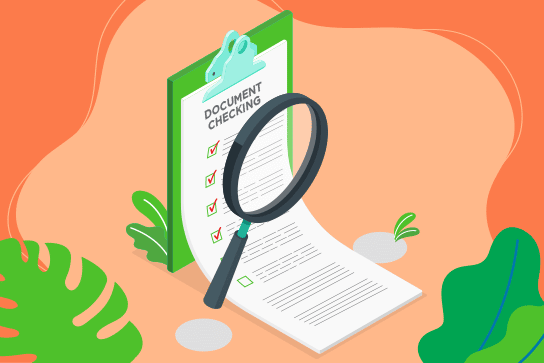LISTEN AUDIO
Last Updated on April 15, 2023 by Ozlinks Education
Subject: Work effectively as a cook
This unit code SITHCCC020* describes the performance outcomes, skills and knowledge required to work as a cook. It incorporates all aspects of organising, preparing, and cooking a variety of food items across different service periods and menu types, using a range of cooking methods and team coordination skills. The unit integrates key technical and organisational skills required by a qualified commercial cook. It brings together the skills and knowledge covered in individual units and focuses on the way they must be applied in a commercial kitchen.
The unit applies to cooks working in hospitality and catering organisations. This could include restaurants, educational institutions, health establishments, defence forces, cafeterias, kiosks, cafes, residential caterers, in flight and other transport caterers, and event and function caterers. Menu types may be classical, contemporary, or ethnic and service may be formal or informal.
It applies to individuals who work under the guidance of more senior chefs. They demonstrate autonomy and judgement to complete routine activities and take limited responsibility in known and stable contexts within established parameters.
Elements and Performance Criteria.
Elements describe the essential outcomes. Performance criteria describe the performance needed to demonstrate achievement of the element.
1. Organise and prepare for food service or production.
1.1 Determine and calculate commodity quantities and determine requirements for quality and style according to recipes and specifications.
1.2 Prepare a job checklist for food preparation that is clear, complete, and appropriate to the situation.
1.3 Liaise with other team members about menu requirements and job roles.
1.4 Develop and follow a work schedule to maximise efficiency, taking into consideration roles and responsibilities of other team members.
1.5 Complete food organisation and preparation according to different food production and service requirements.
2. Monitor financial activities against budget.
2.1 Select and use appropriate commercial equipment to produce menu items in line with manufacturer specifications.
2.2 Cook menu items according to menu type and service style, using appropriate cookery methods, adjusting where required.
2.3 Adjust menu items and ingredients to meet special requests or dietary requirements of customers.
2.4 Produce menu items to meet customer expectations of quality, appeal of presentation and timeliness of delivery.
2.5 Work cooperatively as part of a kitchen team and delegate tasks appropriately.
2.6 Follow workplace safety and hygiene procedures according to organisational and legislative requirements.
2.7 Maintain cleanliness and tidiness of the work environment.
3. Identify and evaluate options for improved budget performance.
3.1 Complete end of shift procedures according to organisational practices.
3.2 Store food items appropriately to minimise food spoilage, contamination, and waste.
3.3 Participate in post-shift debrief or handover.
Assessment Requirements.
Performance Evidence.
Evidence of the ability to complete tasks outlined in elements and performance criteria of this unit in the context of the job role, and:
- safely and hygienically prepare, cook and present menu items for a minimum of 48 complete food service periods that cover:
- breakfast
- dinner
- lunch
- special function
- prepare, cook and present items for at least three of the following different menu styles:
- à la carte
- set menu
- table d’hôte
- buffet
- cyclical
- prepare, cook, and serve items from the following food types that meet quality requirements:
- appetisers and salads
- fish and shellfish
- hot and cold desserts
- meat, poultry and game
- pastries, cakes and yeast goods
- stocks, sauces and soups
- vegetables, fruit, eggs and farinaceous products
- multi-task and integrate technical and other skills to respond to multiple demands simultaneously.
- work professionally as part of a team and coordinate team activities in line with kitchen roles and responsibilities, and organisational requirements
- respond to special customer requests and dietary requirements.
- prepare dishes for customers within the typical time constraints of a busy commercial kitchen.
Knowledge Evidence.
Demonstrated knowledge required to complete the tasks outlined in elements and performance criteria of this unit:
- basic principles and methods of cookery.
- culinary terms commonly used in the industry and organization.
- characteristics of foods from all main food categories served in the organization.
- features of standard recipes.
- organisational procedures for:
- planning, preparing and storing food
- workplace safety and hygiene
- end of shift
- essential principles and practices related to:
- planning and organising work
- food safety and hygiene
- kitchen safety and cleanliness
- varying requirements of different food service periods and menu types.
Assessment Conditions.
Skills must be demonstrated in an operational commercial kitchen. The assessment covers the following topics:
- fixtures and large equipment:
- bain marie or hot box
- commercial: blenders and food mills, food processors, planetary mixers.
- commercial dishwasher
- commercial grade work benches (1.5 m/person)
- commercial ovens with trays (one per two persons)
- commercial refrigeration facilities: cool room, freezer, fridge
- computers, printers and stock control software systems currently used by the hospitality industry
- electronic equipment used for stock control
- deep-fryer
- designated storage areas for dry goods and perishables
- double sink
- gas, electric or induction stove tops (two burners per person)
- hot plate or griddle
- lifting and transporting equipment
- recording systems
- salamander or other form of griller (one per four persons)
- storage facilities: shelving, trays
- slicer
- steamers
- small equipment:
- baking sheets and trays
- beaters
- containers for hot and cold food
- cutting boards
- food handler gloves
- graters
- juicers
- knife sharpening equipment
- sharpening steels and stones
- knives and cleavers: butcher and boning knives, bread knives, carving knives, chef knives, filleting knives, large serrated cake knives, palette knives, utility knives
- measurers: metric calibrated measuring jugs, measuring spoons, portion control scoops
- mortar and pestle
- moulds and forms
- mouli
- oven mitts
- piping bags and attachments
- poachers
- range of pans and pots for small and large production: fry pans: stainless steel, cast iron, iron and non-stick. Stock pots.
- salad spinner
- scales
- scoops, skimmers and spiders
- service-ware: platters, dishes, and bowls, cutlery and serving utensils
- sets of stainless steel bowls
- small utensils: flour and drum sieves, peelers, corers and slicers, strainers and chinois, scrapers, spatulas, pastry brush, tongs and serving utensils, whisks:
- steamers
- spoons
- temperature probes
- thermometers
- cleaning materials and equipment:
- cleaning cloths
- commercial cleaning and sanitising agents and chemicals for cleaning commercial kitchens, equipment and food storage areas
- dustpans and brooms
- garbage bins and bags
- hand towel dispenser and hand towels
- mops and buckets
- separate hand basin and antiseptic liquid soap dispenser for hand washing
- sponges, brushes and scourers
- tea towels
- organisational specifications:
- equipment manufacturer instructions
- current commercial stock control procedures and documentation for ordering, monitoring and maintaining stock
- mise en place lists, menus, standard recipes, and recipes for special dietary requirements
- ordering and docketing paperwork
- food safety plans
- guidelines relating to food disposal, storage and presentation requirements




